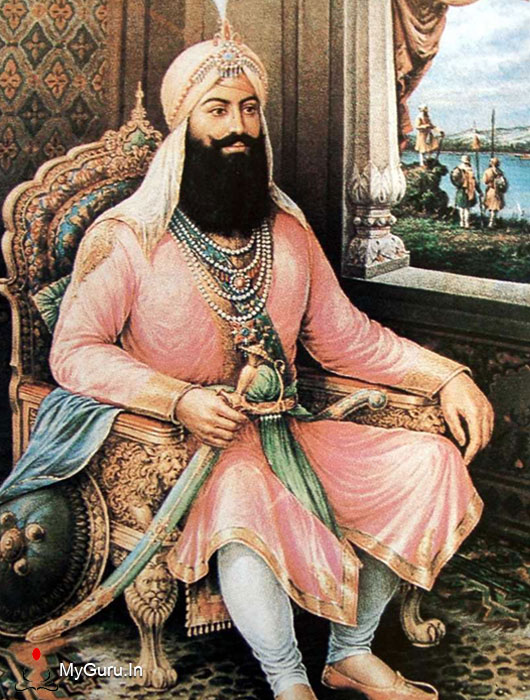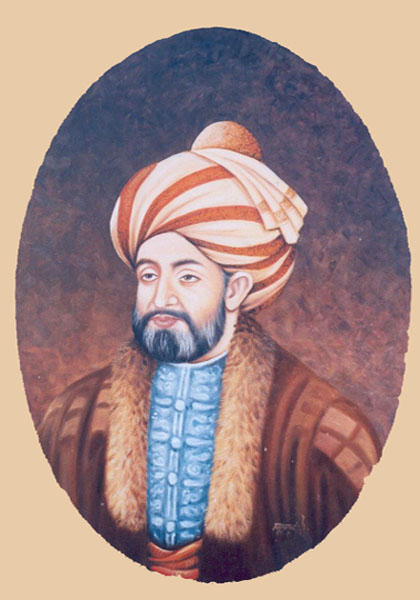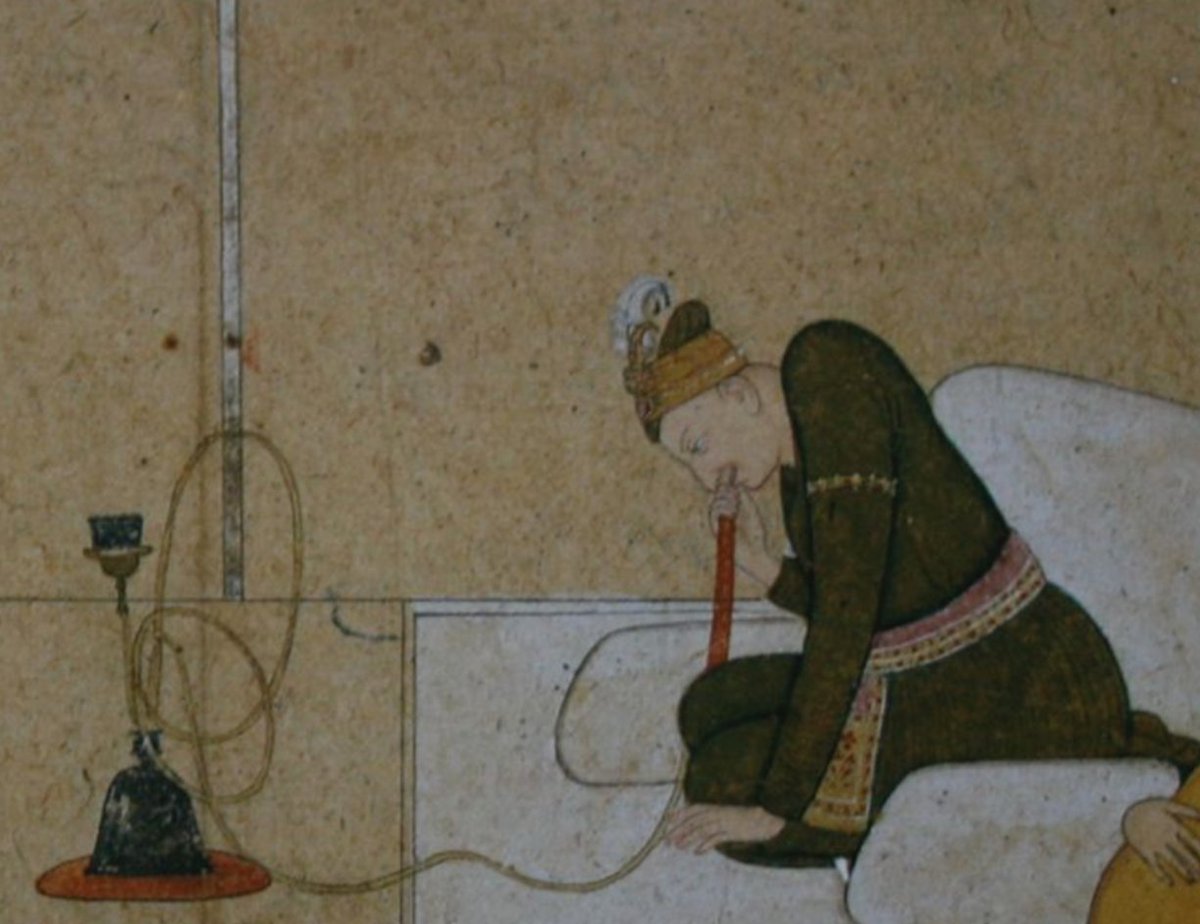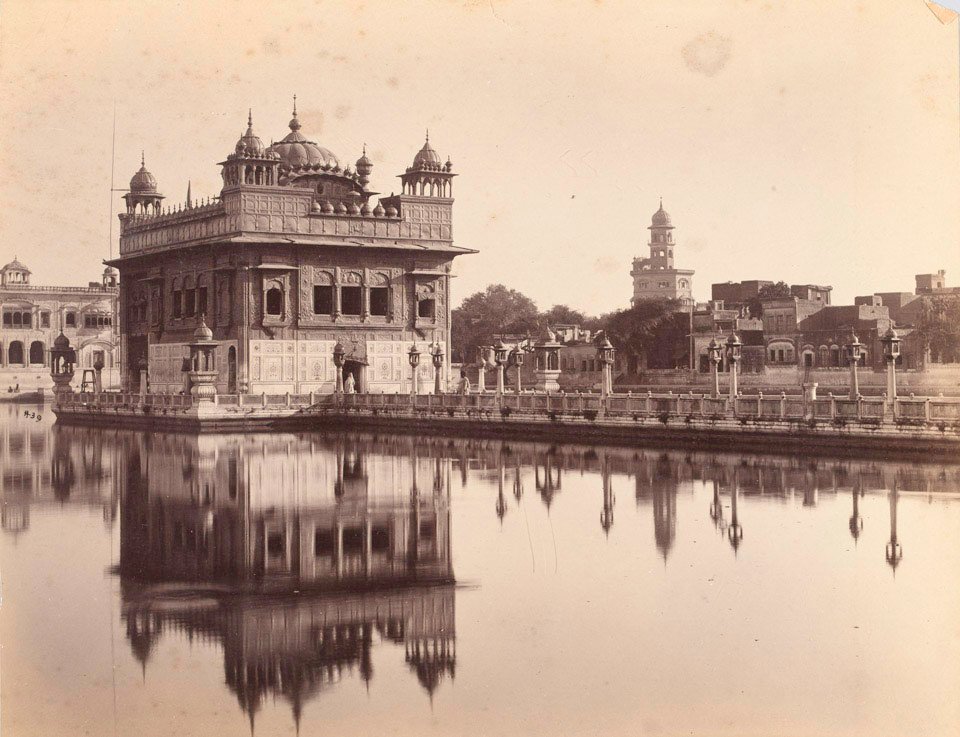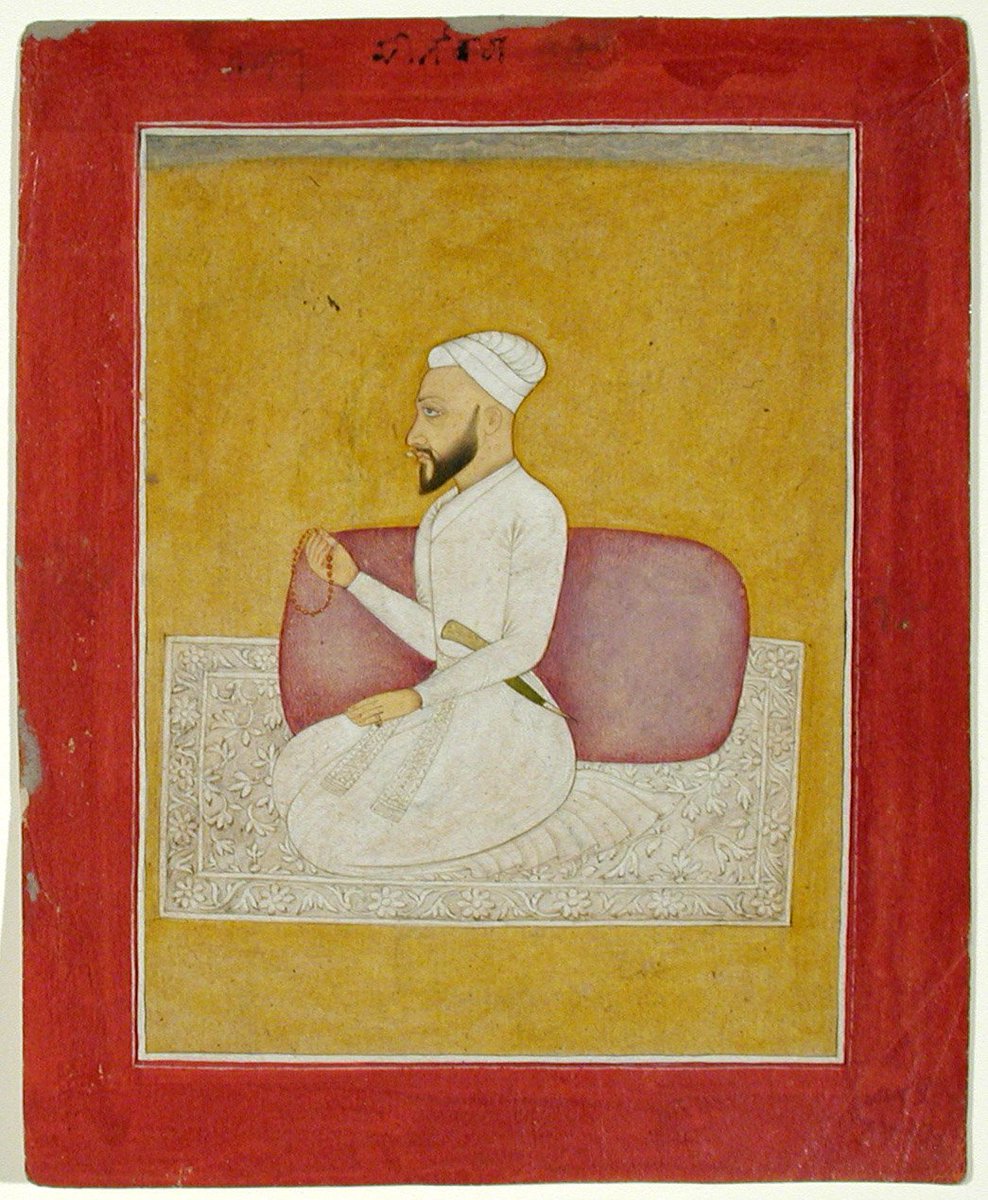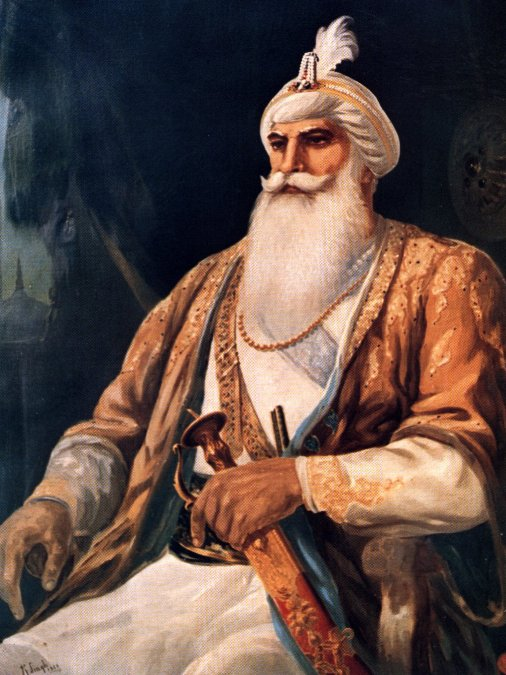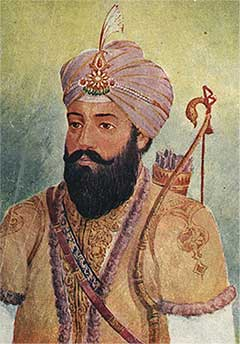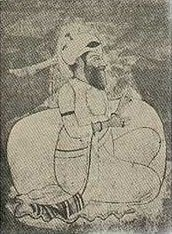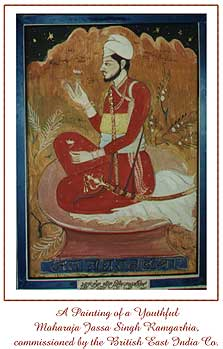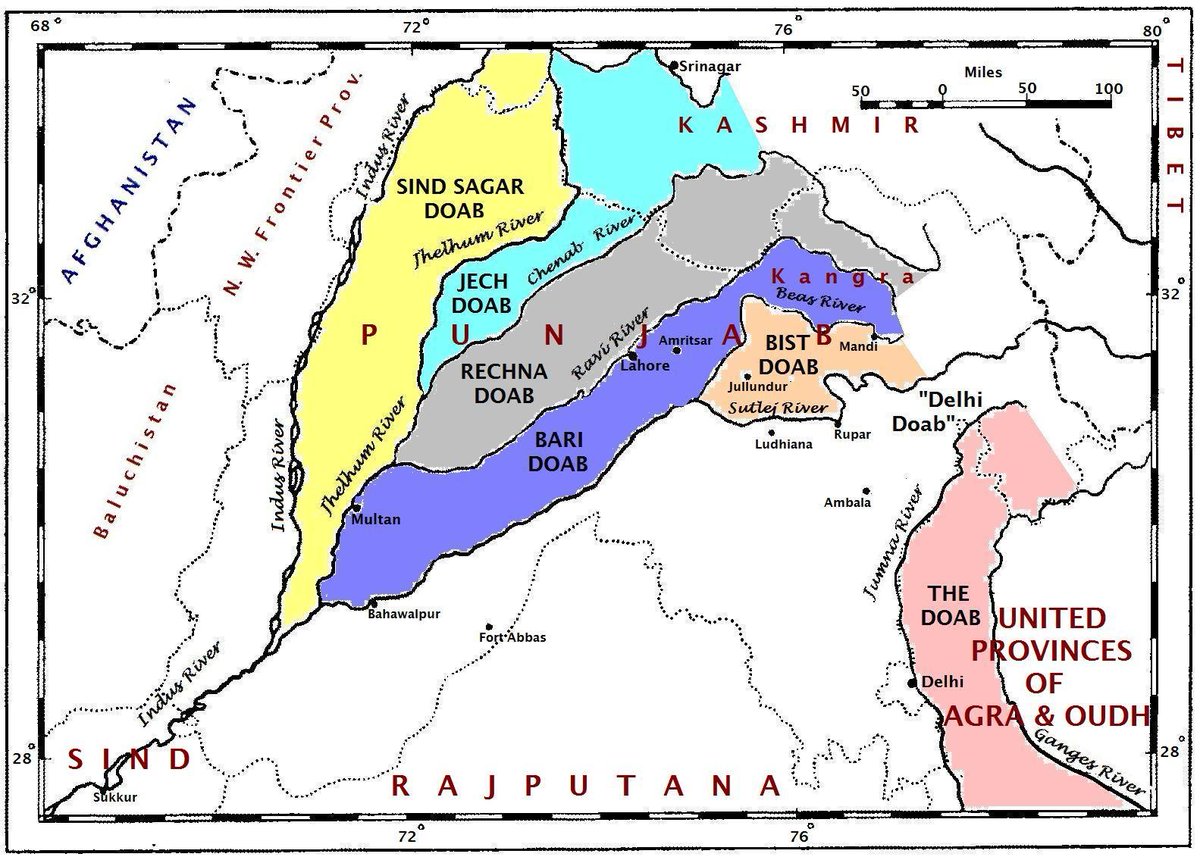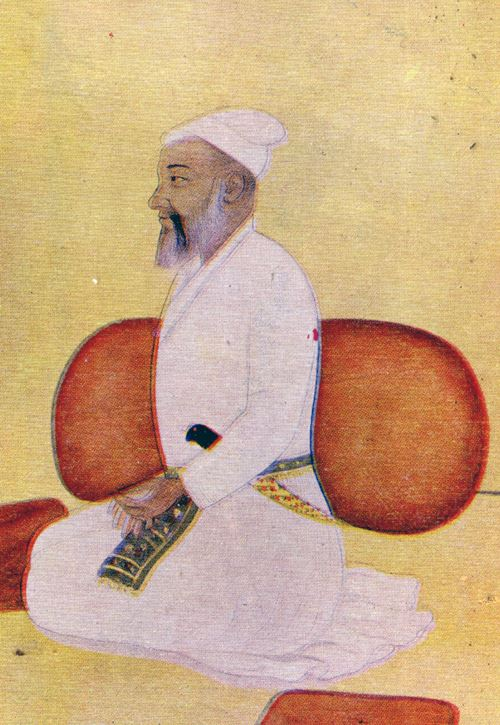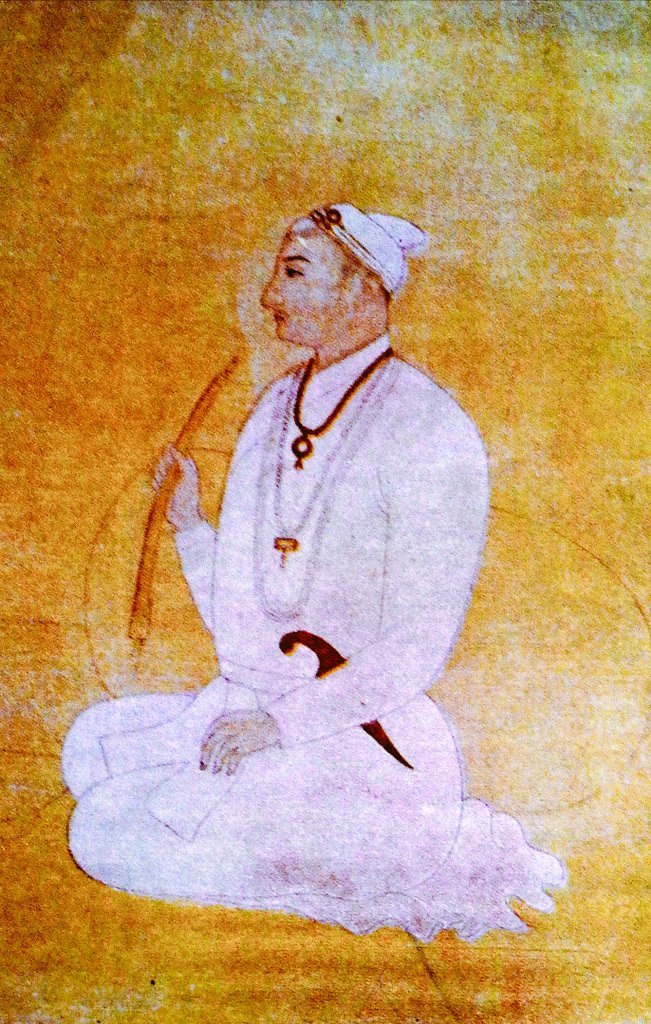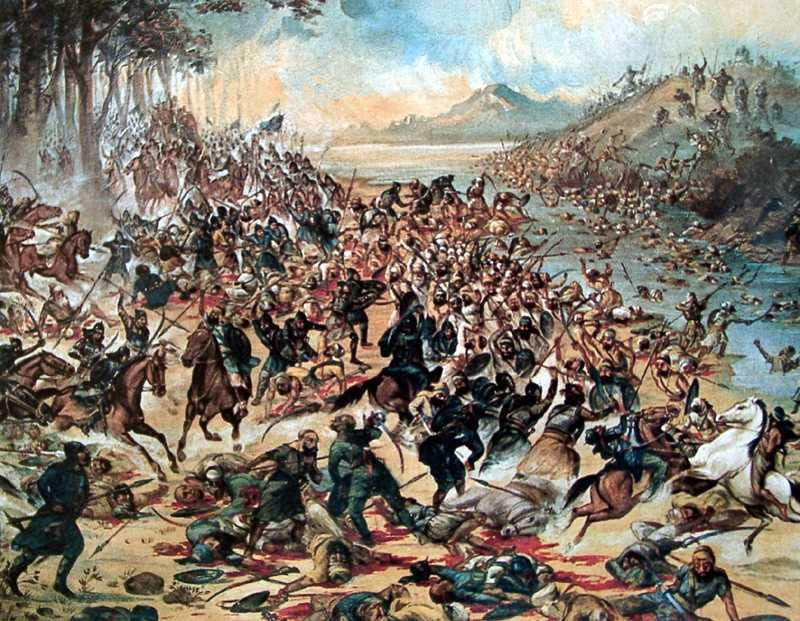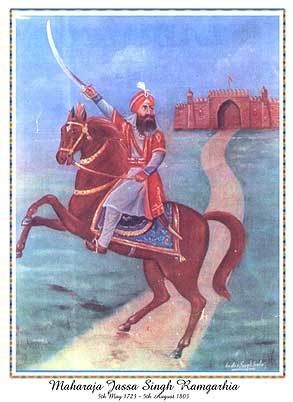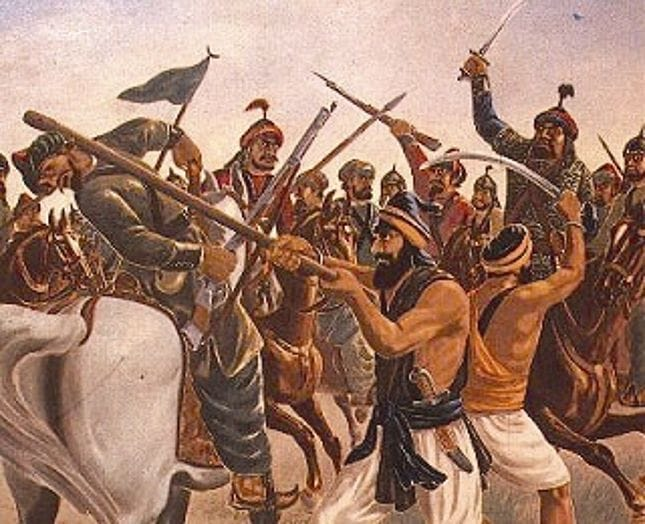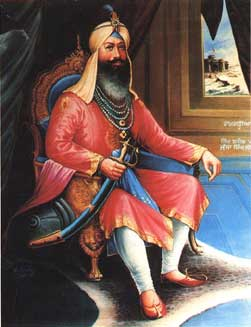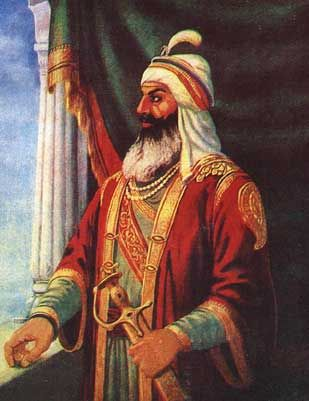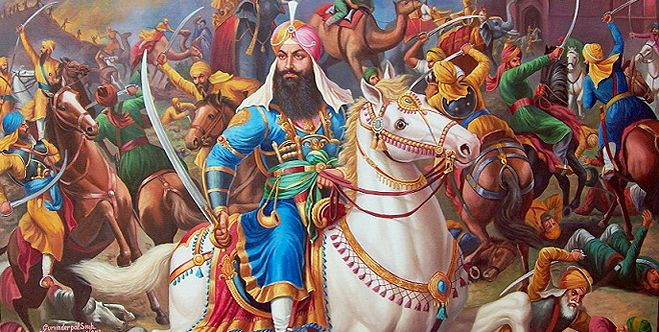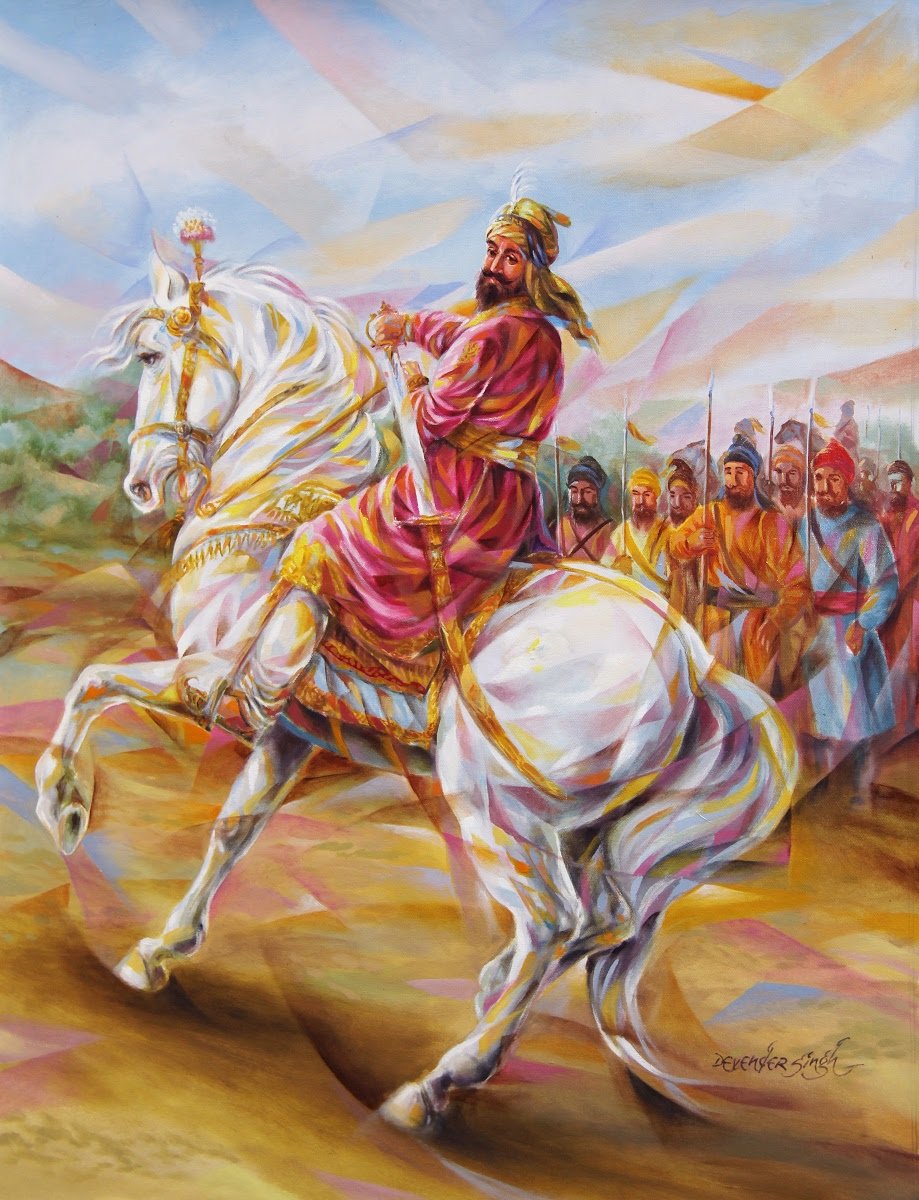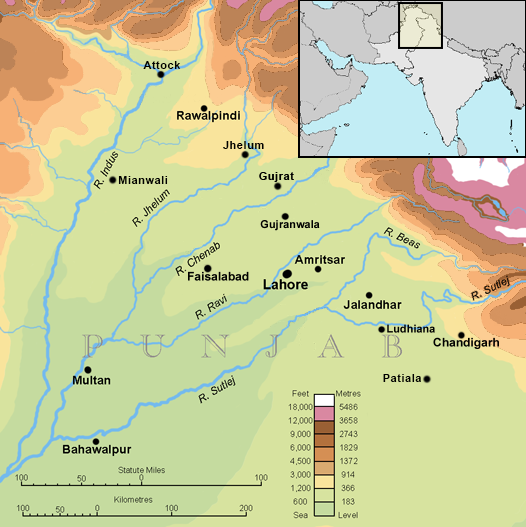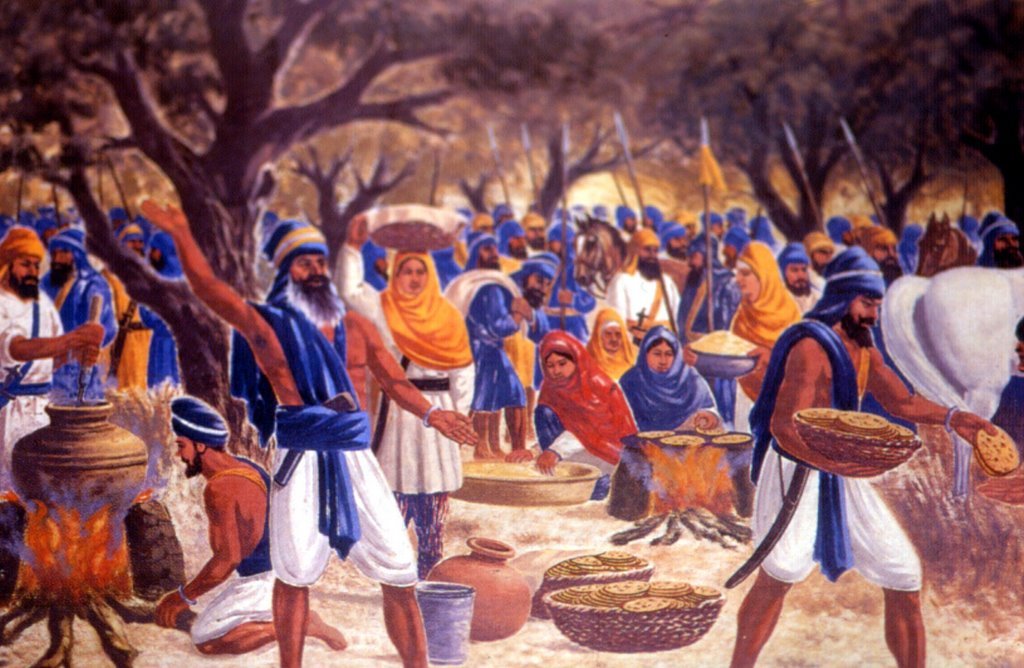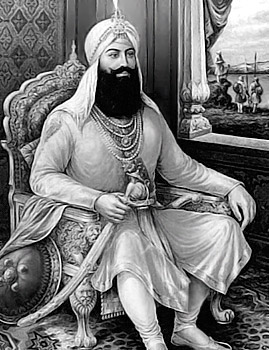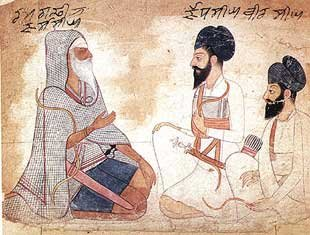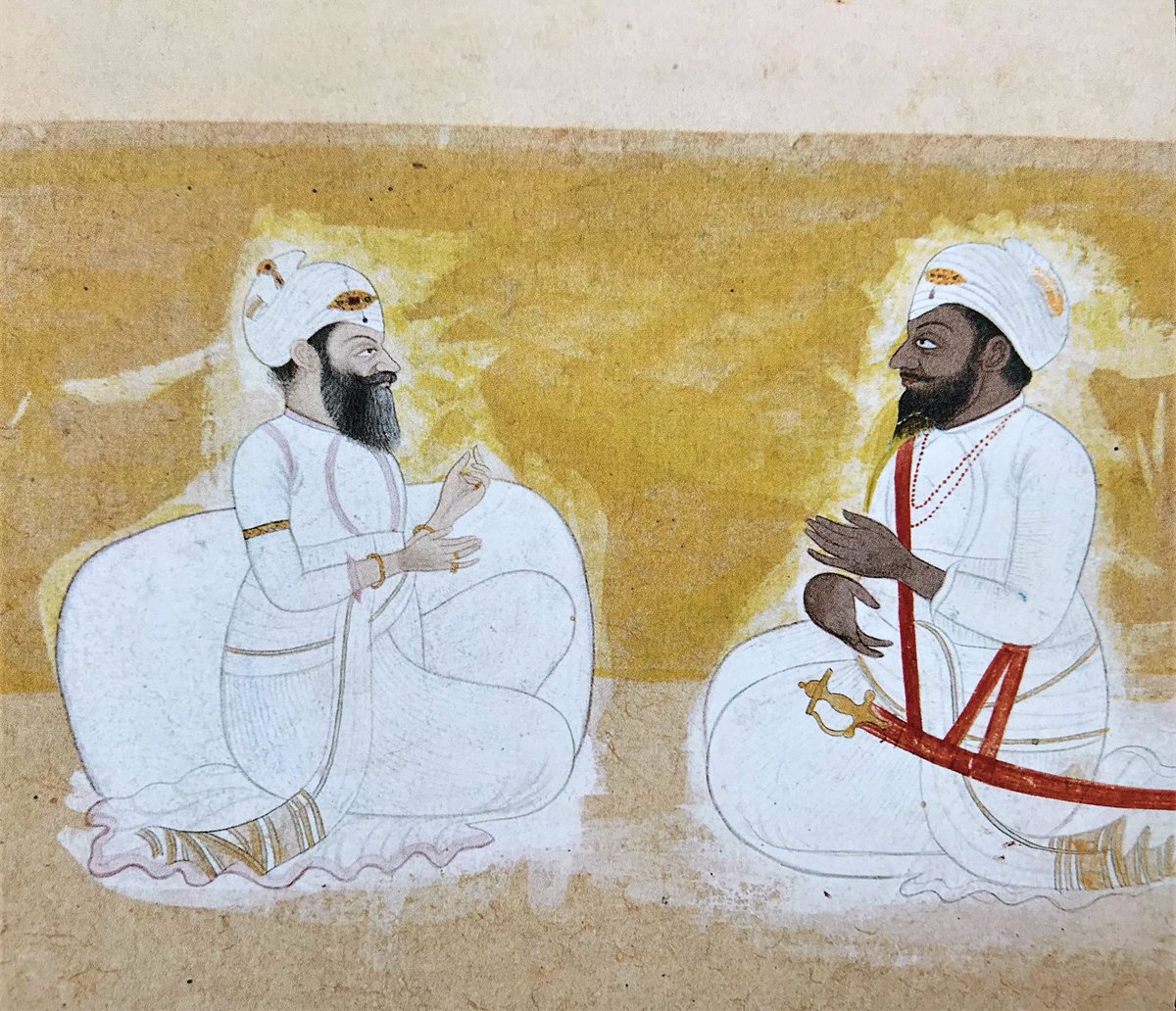Jassa Singh Icchogilia Snippets (A Thread) Continued - How Jassa Singh earnt the epithet "Ramgharia"
In 1748 Ahmad Shah Abdali (pictured) invades India for the first time and faces the Mughal forces led by Wazir Wamar-ud-Din, at Manupur near Sirhind.
The Mughals won, although at a heavy cost, the Emperor was pleased with the defence by Muin-ul-Mulk, son of Qamar-ud-Din. Muin-ul-Mulk was made the Nazim of Lahore and Multan. (Mir Mannu smoking hookah)
This is at the same time Ram Rauni is constructed and the system of Rakhi was becoming established within Punjab. Muin-ul-Mulk (Mir Mannu) saw this as a direct threat and issued decrees for the extirpation of the Sikhs.
 Harmandir Sahib, Amritsar, NAM
Harmandir Sahib, Amritsar, NAM
 Harmandir Sahib, Amritsar, NAM
Harmandir Sahib, Amritsar, NAM
Adina Beg Khan, situated in Jalandhar, surrounded by Sikhs knew that the decrease in Sikh power and increase in Mughal power, ensured a decrease in his own authority and freedom.
 Adina Beg, The San Diego Museum of Art
Adina Beg, The San Diego Museum of Art
 Adina Beg, The San Diego Museum of Art
Adina Beg, The San Diego Museum of Art
As a result, Adina Beg thought it wise to reach an agreement with the Sikhs rather than try to exterminate them. He sent several emissaries to the Sikhs. Jassa Singh Ahluwalia refused.
Jassa Singh Icchogilia agreed. They both had first hand experience of one another - amongst other things, clashing c. 1740. Adina Beg had first hand experience of Jassa Singh Icchogilia's military skills and political sagacity. Both had plans of their own.
 By S. Thakur Singh
By S. Thakur Singh
 By S. Thakur Singh
By S. Thakur Singh
Jassa Singh is said to have joined in order to get a closer look at the anti-Sikh policies sent by Mir Mannu. Other sources state that Jassa Singh joined at the behest of the Dal Khalsa.
 Sardar Jassa Singh Ramgarhia in the Lahore museum
Sardar Jassa Singh Ramgarhia in the Lahore museum
 Sardar Jassa Singh Ramgarhia in the Lahore museum
Sardar Jassa Singh Ramgarhia in the Lahore museum
In fact, Jassa Singh resolved to get his jatha of Sikhs employment with Adina Beg, with military jobs including revneue collection, over alloted land. Jassa Singh provided economic stability and political security.
 Painting of Jassa Singh commissioned by the British EIC.
Painting of Jassa Singh commissioned by the British EIC.
 Painting of Jassa Singh commissioned by the British EIC.
Painting of Jassa Singh commissioned by the British EIC.
Jassa Singh becomes a distinguished commander in Adina Beg's force. Ensured several Sikhs were appointed in the Jalandhar Doab and cultivated good relations with Diwan Kaura Mall (a well known confidant of Mir Mannu, yet a friend to the Sikhs)
However, this cordial balance Adina Beg maintained could not last much longer and Adina Beg eventually implemented the orders of Mir Mannu. When Adina's forces arrived in the Jalandhar Doab, Sikhs took to the forests, surrounding areas or to Amritsar.
 Adina Beg
Adina Beg
 Adina Beg
Adina Beg
Mir Mannu dispatched an army from Lahore to lay siege to Ram Rauni and ordered Adina Beg to provide reinforcements. This detachment included Jassa Singh Ramgharia.
 Mir Mannu
Mir Mannu
 Mir Mannu
Mir Mannu
This force reinforced the Lahore army and besieged the fort of Ram Rauni for about four months, at which point, left with no provisions, the Sikhs decided to face their besiegers.
It was at this point that Jassa Singh found an appropriate opportunity one night and entered the fort along with his contingent and took the entire responsibility of its defence on his own shoulders.
Historians have provided different accounts of this crucial hour: Khushwaqt Rai, author of Tawarikh-i-Sikh, says the siege lasted from October 1748 to January 1749, skirmishes took place every day and resulted in the death of two Sikhs.
Those who remained wrote a letter to Jassa Singh stating, ‘if you do not help us out at this hour, you will never be able to return to the fold of the Khalsa.’
Bhangu in Panth Prakash writes Jassa Singh felt an urge within to rescue his comrades but he hesitated as he had been ostracised from the Panth due to the female infanticide incident that had occurred earlier in the year of 1748.
It was he who wrote the letter and sent it, by firing an arrow with it attached into the fort. The besieged replied in similar fashion stating they should put all past differences aside to face the onslaught collectively.
The loss of a prominent and capable general disheartened the Lahore forces, along with depleting their forces of some of the most capable fighters. On the flip side, the besieged felt much relief with the arrival of Jassa Singh, his capability, and his contingent.
Jassa Singh then took advantage of his connections within the system of government at the time. He sent several messages to Diwan Kaura Mall to persuade Mir Mannu to lift the siege as a matter of strategy.
On one side, Shah Nawas Khan had taken Multan and on the other, there was the imminent danger of an Abdali invasion. Therefore, it was only common-sense to disengage with the Sikhs.
It worked; the siege of lifted and Mir Mannu agreed to give to the Sikhs ¼ of the revenues of the paraganah of Patti as jagir.
Jassa Singh’s actions enabled the grievous default attributed to him to be washed away. Everyone was now appreciative of his bravery, endeavour and fearlessness. Immediately after the fort of Ram Rauni was renamed Ramgarh and Jassa Singh was hailed as the custodian of this fort.
Along with this his companions came to be called “Ramgharias” because they had come to the defence of the fort in the hour of need and they had played a critical role in its defence.
 Sadar Jassa Singh with his two sons Jodh Singh & Bir Singh. c 1780
Sadar Jassa Singh with his two sons Jodh Singh & Bir Singh. c 1780
 Sadar Jassa Singh with his two sons Jodh Singh & Bir Singh. c 1780
Sadar Jassa Singh with his two sons Jodh Singh & Bir Singh. c 1780
Ramgharia isn't a caste or class but in fact an epithet bestowed upon Jassa Singh by the Sikhs themselves. It was accepted with pride and honour and the principality set up by Jassa Singh came to be known as the Ramgharia Misl.
Sardar Jassa Singh Ramgarhia on left and Amar Singh of Patiala. Pahari late 18th century. Lahore Museum. (Warrior Saints. Madra & Singh 2013)
You can listen to how Jassa Singh earnt the title Ramgharia here >>> https://soundcloud.com/ramblingsofasikh/ep-03-part-2-a-short-introduction-to-jassa-singh-ramgharia-ichogillia-to-ramgharia

 Read on Twitter
Read on Twitter